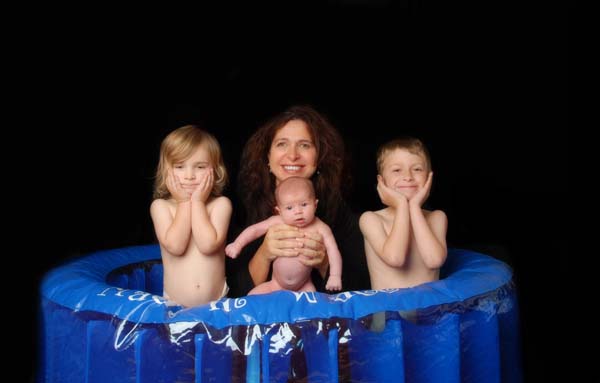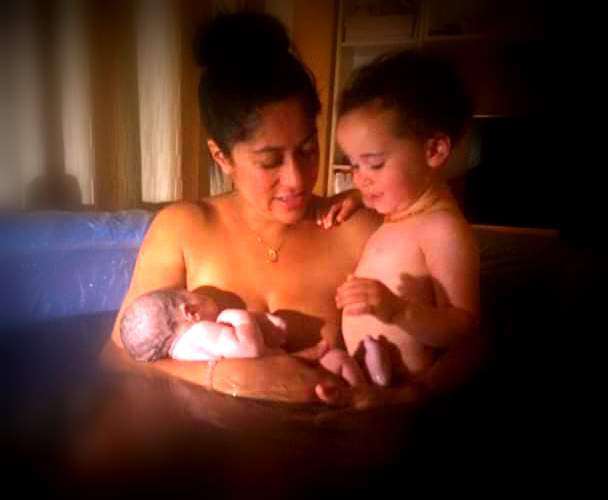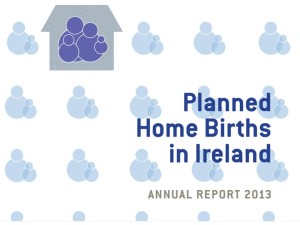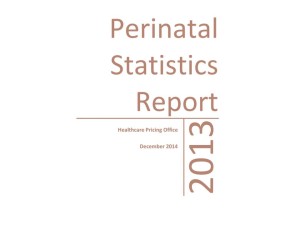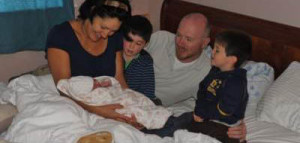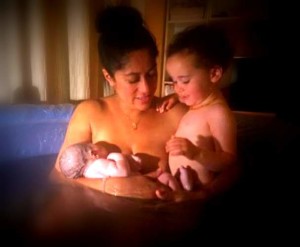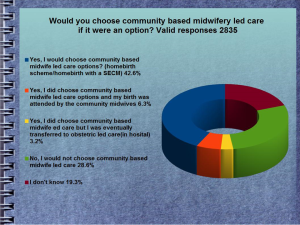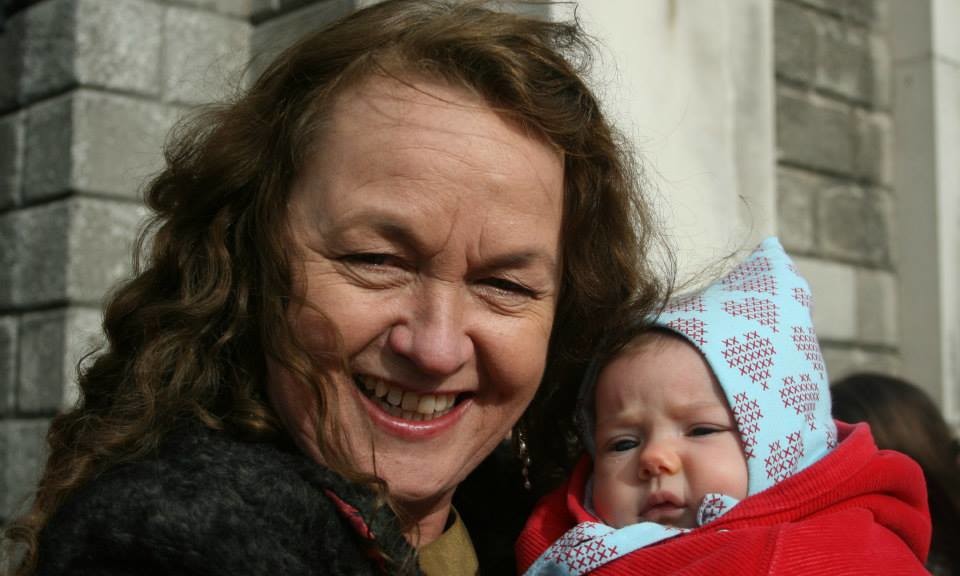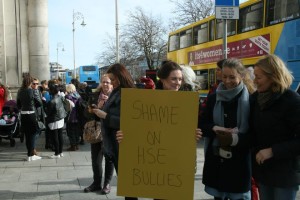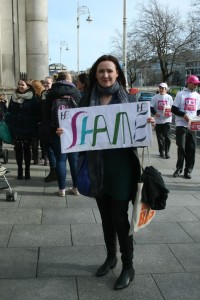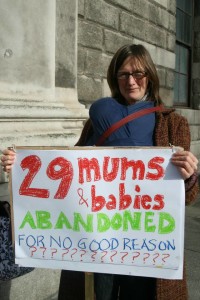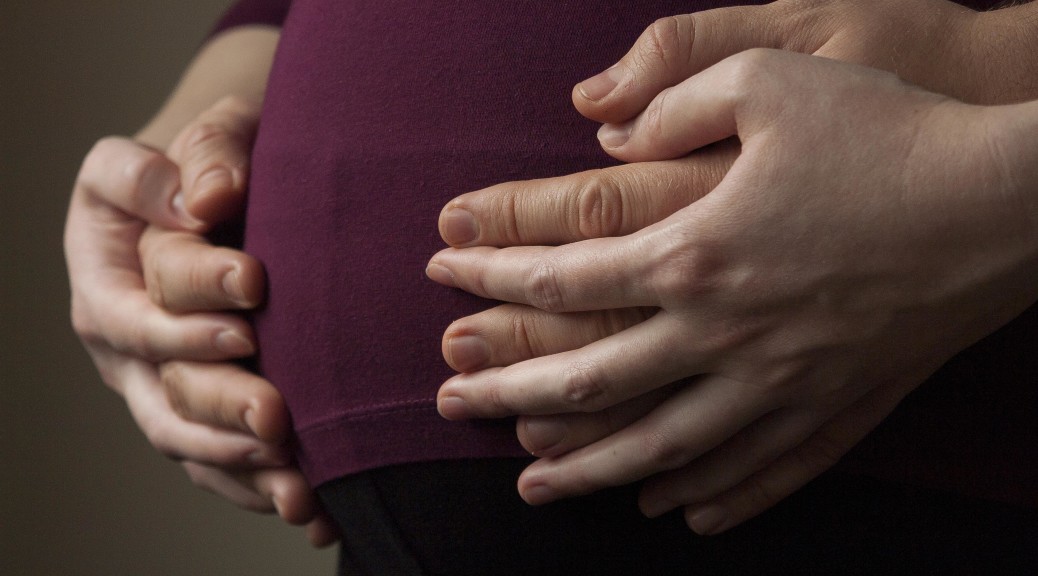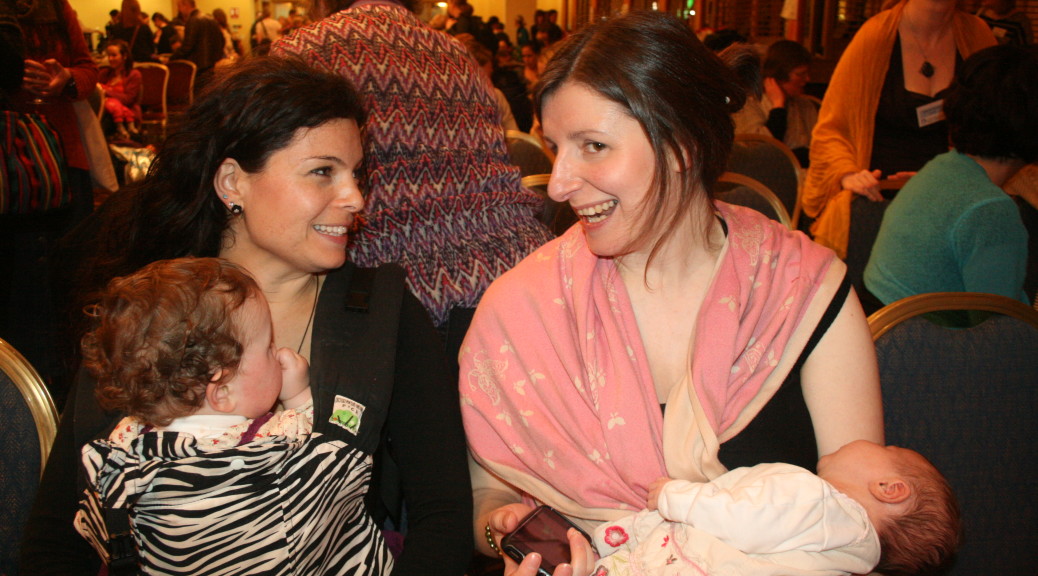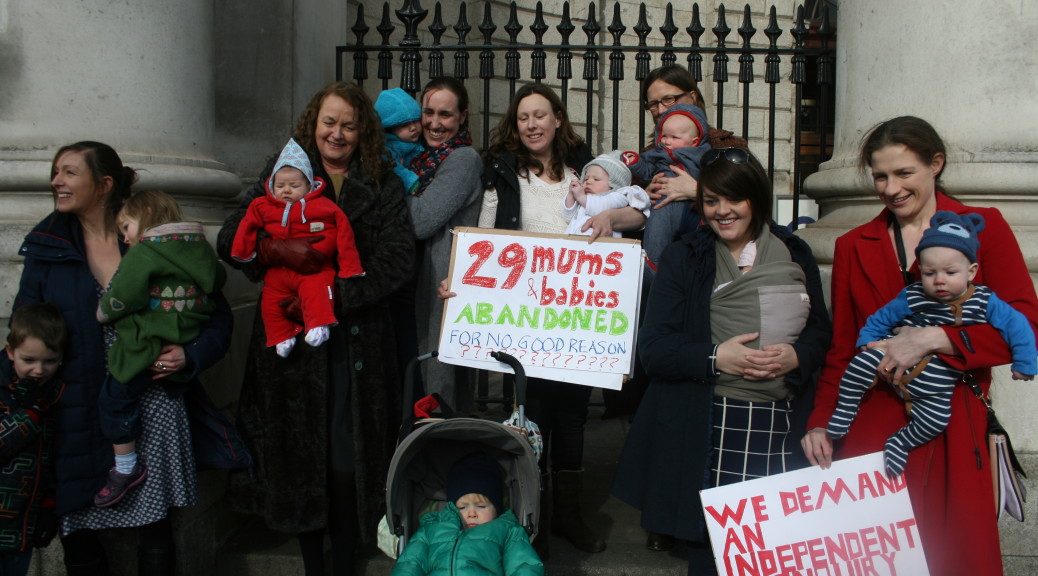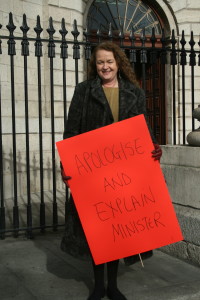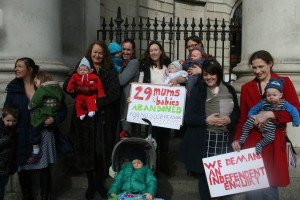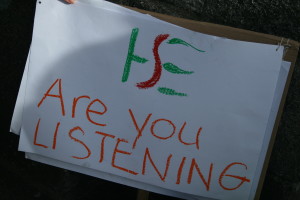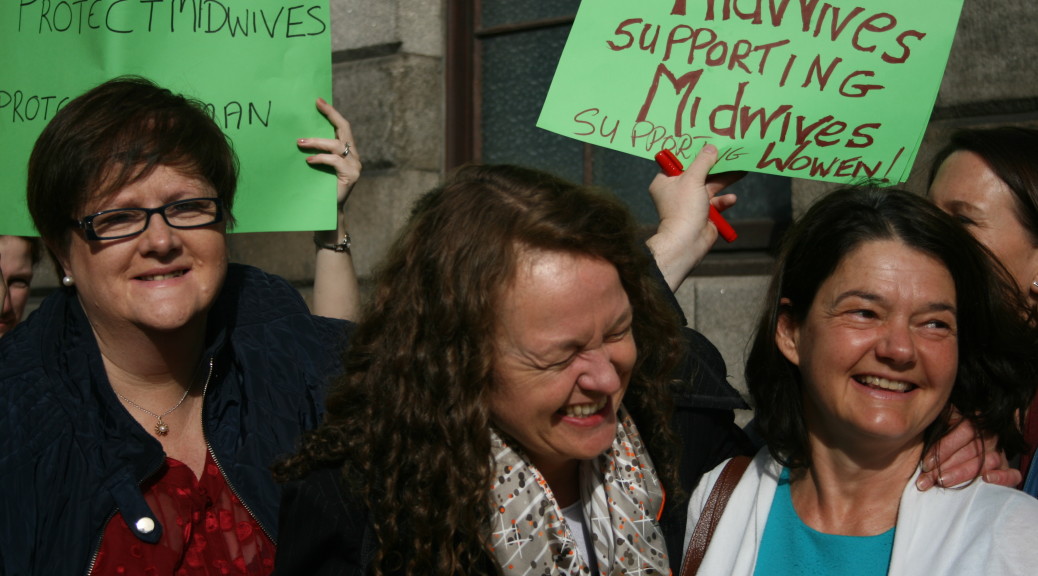Many women consider using hydrotherapy during their homebirth, or even during the early part of their labour before they go to hospital. For some women this might mean using a shower or a bath and for others it means using a birthing pool. Some women on the other hand have no inclination whatsoever to use water. As with any kind of birth there is no right or wrong way to have a baby, and choosing water to ease the intensity of labour is an entirely personal choice.
For those women who are interested in having a pool hopefully this article will help with planning it. If you’re not sure if you’d like to have one or not, it’s worthwhile to have it there and ready so that if you do feel like being in water on the day, you have it as an option. And if you find you prefer dry land you can just get out. However so many women love having it and really feel it helps with contractions. Philomena Canning (SECM) calls it the ‘natural epidural’. This article was compiled from tips submitted by members of the Homebirth Ireland Facebook group so huge thanks to all that contributed. I used a pool on all my births. Here is me and three of my kids in an (empty ) pool!

Having a water birth at home
Whether or not you can birth your baby in water or use it for labour will depend on what route you are taking for your home birth. The main options are:
- HSE Homebirth with Self Employed Community Midwife – in this case you will need to supply your own pool (see options below) although it is possible some Self Employed Community Midwives (SECM) have one they can lend. List of practicing home birth midwives
- Hospital home birth services:
- National Maternity Hospital, Holles Street Dublin – Domino Scheme. You can labour in a pool but not give birth. You will need to supply your own pool.
- Waterford Domino / Home Birth Service – You can labour in a pool but not give birth. You will need to supply your own pool.
- Wexford Maternity Unit – You can have a water birth with the Wexford Domino scheme although their home birth scheme is limited at the moment due to a lack of midwives. You will need to supply your own pool.
- Private service provider – Neighbourhood Midwives – pool and all accessories included with all of the home-birth packages. The pool supplied is the Birth Pool in a Box.
More information on accessing home birth services around the country here:
http://homebirthireland.com/how-to-organsie/home-birth-services-2/
Having a water birth in hospital
This article is focusing on home water births however, it is possible to have a water birth in one of Ireland’s hospitals at present (Mar 2015). The Coombe have one pool and started doing water births in approximately September 2014. If the pool is available i.e. there is not a woman labouring in it or giving birth and there are staff on duty that have experience with waterbirths when you want to use it, then it is possible to labour and give birth in it. However, you will have to have signed a conset form 24 hours in advance. Some of the other hospitals have pools you can labour in but you would need to get out before the baby is born. Pools also exist in Our Lady of Lourdes and CUMH.
Where to get a pool
- You may be able to borrow a pool – your midwife or hospital home birth service may be able to advise.
- There are a number of travelling pools and posting a request on one of the Home Birth related Facebook groups may get what you need. Simply search home birth ireland on facebook
- You can purchase a pool. The following site sells two popular birth pools – La Bassine and Birth Pool in a Box, along with their relevant accessories: http://birthingmamas.ie/shop
Note: if borrowing a pool it is essential to buy a new liner and hose for the birth itself for hygiene reasons. This can be bought on birthingmamas.ie also.Just be sure to buy the correct liner for the type of pool you have.
What type of pool
 Here are the sites with the detailed specifications such as the size, weight and other features of the more popular pools:
Here are the sites with the detailed specifications such as the size, weight and other features of the more popular pools:
- Decide what sized pool you would like. This might depend on whether your partner will be in the pool with you and what sized pool you would feel comfortable in. Remember that a bigger pool will take longer to fill and longer to get the water warm enough depending on your water heating system and the water pressure. Check out the specs of the pools above for more details. One persons experience: “I didn’t find the round smaller one to be that small. plenty of leg room for me, I’m 5’7. I had no intention on having anyone else in the pool with me though, if I did then the oval would be better option.”
Where to have the pool
- When deciding where to put the pool in your home, make sure the floor can support it. According to the Birth Pool in a Box website the mini pool weighs 487kg when filled. This might determine whether you can have it upstairs or not for instance.
- Make sure the pool is near enough to a tap – the hoses sold by Birthing mamas are 15m long.
Preparing – do a trial run
The top tip when it came to water birth was to do a trial run with inflating and filling your pool in advance. This is really important so that you find out how long it takes to inflate and fill it with warm water. This will also depend on your water heating system or immersion. The pool when 80% filled is approximately 5 or 6 bath fulls. It is particularly important if you suspect it will be a quick birth. Also this way you will find out if the tap attachments you have are the correct ones or if the pool needs to be repaired (if it’s not a new one). It also means that your birth partner is spending less time on the day figuring out how to inflate and fill the pool so they have more time to spend helping you. Doing a trial run will reveal any problems ahead of time when you still have time to resolve them and means you won’t have to worry about it or even think about it on the day. Check out the rest of the tips below for some creative ways to sort out any issues.
Heating the water
 This can be the trickiest part of having a birth pool if your labour is quick or depending on your water heating system. A pool when 80% full is 5 to 6 bath-fulls of water. Here are some good tips and creative solutions provided by the Facebook group members:
This can be the trickiest part of having a birth pool if your labour is quick or depending on your water heating system. A pool when 80% full is 5 to 6 bath-fulls of water. Here are some good tips and creative solutions provided by the Facebook group members:
- In the last couple of weeks when you are ‘due’, adjust the clock timer on your hot water tank to heat the water (even on ‘sink’ ) regularly every 2-3 hours so it already ready to start the filling process in early labour, and once you suspect labour has begun you can switch it to ‘on’ and ‘bath’ for the next and ongoing fills. By preparing this way hopefully you will get a head start.
- Turn on the immersion or heating as soon as contractions start.
- You could use the hot feed under the sink – you can buy a copper fitting in B&Q for around €6. In this case there was already a valve in place – see image.

- If you know you do not have great tank capacity, hire other ways of heating water in addition to your water tank and boiling pots of water on your stove or cooker e.g .gas camping stove or a berco boiler. You may be able to borrow a berco boiler from a local sports club, community centre or school.
- Try filling the pool from an electric shower. You can just disconnect the shower head and fit this to the hose with a screw-on fitting that you can buy inexpensively in any hardware shop.
Inflating the pool
 You will need a pump in order to inflate the pool – this should come with the pool. If it doesnt you will have to buy one as it would definitely not be advisable to try to do this manually!
You will need a pump in order to inflate the pool – this should come with the pool. If it doesnt you will have to buy one as it would definitely not be advisable to try to do this manually!- Unlike a condom, the liner has to go on when the pool is not quite erect!
- Inflating the mini Birth pool in a Box (pictured above) takes approximately 25 minutes using the goodbirh Electric Inflate-Deflate Pump.
- If you have the space and think you may not have much time to spare on the day you could inflate the pool ahead of time and keep it in the room where you intend to use it (or another room if it will fit through the door). However, under no circumstances should water be left in the pool for long periods of time in the run up to the birth as this is a risk for Legionnaires’ disease.
Filling the pool
- A Phthalates free Eco hose is what is recommended by the pool companies as there are can be chemicals in the other types of hose.
- Several mothers stated that filling the pool from the kitchen tap via the hose took 45 minutes. For another contributor it took and hour and a half. However the time needed to fill the pool will obviously vary depending on your tank capacity and water pressure and of course will depend on how quickly the water is heated – see previous section on heating the water.
- Fill the pool earlier than you think – especially if it is your second or subsequent baby. So for instance, begin filling it as soon as you feel contractions start. However if the water is in the pool for more than 12 hours there is a risk ofLegionnaires’ disease so pre-filling it too much in advance is inadvisable.
- Find the strongest / fastest flowing tap – it may not be your kitchen tap, there could be a more direct line from the immersion tank, for example the tap in your under stairs bathroom.
- If the water pressure is an issue and you have an outside tap – this might have better pressure than an inside tap – the pressure may not be good enough to pump water up into the attic but it may be available in an outside tap.
- If you are on good terms with next door neighbours , they might like to be able to be helpful and run a hose from their house! Two hoses = half the time.
- Don’t feel you can’t use the pool to your advantage unless it is ‘full’ ! Even having a third full can give you comfort and once your pelvis can be immersed you can birth in it. Check the pool for the minimum capacity line.
- Even if you miss using the pool due to it not being ready for labour or birth continue filling it and get in once your baby is born and enjoy baby and soothing warm comfort.
- Between pool and liner put in a bean bag – you can use it to get comfortable and rest on but it also reduces the volume of water needed if your tank capacity is low. However it would be a good to test this out in your trial run as the following story shows: “We did this with ours, but the pressure of the water made the beans solidify together so there was a big hard lump in the pool! Made it super difficult for me to get comfy at first and eventually we had to cut the liner and take it out. This resulted in not enough water volume in the pool and it only just made it in time for the birth”
Keeping the water warm
- The water should be between 32 and 38 degrees Celsius for labour.
- Remember that is is easier to add cold water if it is a few degrees too warm than to heat it up – however check your pool specifications as it can weaken the pool if the water is too hot.
- If topping up the pool with hot water do not add it near the sides of the pool (or near the mother!)
- There are fitted pool covers you can buy to keep the water warm before you get into it or some alternatives are tarpaulin, a roll of bubble wrap on its own or with blankets or a duvet on top, a sleeping bag or foil shock blankets marathon runners use.
- Obviously keeping the room itself warm will help.
Preparing area around the pool
- You might like to have some covers on the floor so that it protects the floor from any spillages and also so that it is not cold and slippery if you are getting in and out. Here are a few ideas:
- Tarpaulin (available in Woodies or any hardware shops) underneath to protect the floor and prevent it being slippy – see picture in the section on doing a trial run above.
- Builders grade plastic (available in Woodies)
- A piece of flannel with waterproof backing – like what you would use as a liner for a bed for children.
- Old towels
- The pools have an air filled floor but you could have a duvet or sleeping bag underneath the pool for extra comfort and heat retention particularly if it is a hard or cold floor.
- Have a table and chair near the pool so the midwife can do their paperwork/note-taking and be nearby.
- A toddler step would be useful for getting in or out of the pool.
Emptying the pool
- You can use a water pump to do this.
- If there is at least a small slope from the pool to a drain outside, you can simply use a hose and let gravity do the work to empty most of the pool.
- Rinse the liner and hose with Milton to clean/sterilize them.
Other tips
- If your pool needs repair, Sugru works – bicycle repair kit does not! Definitely something you do not need to find out on the day so do that trial run!
Irish Birth stories where the mother laboured in water
- Click here for a list of Irish birth stories where the mother laboured, and sometimes birthed, in water.
Useful links
- Birth pool in a Box details: https://www.birthpoolinabox.co.uk/personal-pools/birth-pool-in-a-box-design-and-spec
- La Bassine pool details: http://www.madeinwater.co.uk/la-bassine-birth-pool-kit/
- Birth pool and accessories shop: http://birthingmamas.ie/shop
- Article by AIMs Ireland: No Epidural? Pain management alternatives and tips – Part 3: Water Therapy, Water Immersion and Water Birth
- Information on home birth services in Ireland: http://homebirthireland.com/how-to-organsie/home-birth-services-2/
This post was complied by Roseanne Dolan and edited by Krysia Lynch based on contributions from many home birth mothers on the Home Birth Community of Ireland closed facebook group. It was originally posted in the HBA newsletter in 2014

